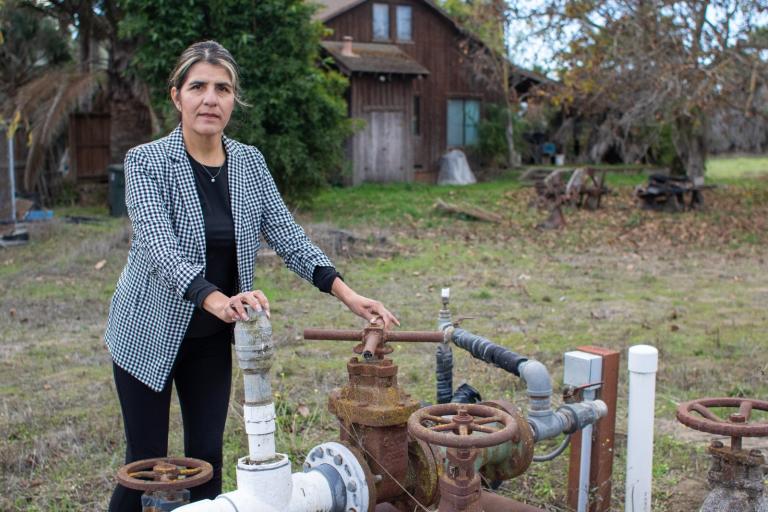 As international leaders trek home from Durban, South Africa, after a week of plotting the world’s response to global warming, the debate rages here at home — over whether Americans even care.
As international leaders trek home from Durban, South Africa, after a week of plotting the world’s response to global warming, the debate rages here at home — over whether Americans even care.
The New York Times ran a story in October headlined, “Where did global warming go?” that cited polls suggesting that Americans had lost interest in climate change, or just didn’t believe in it. Climate activists have blamed the declines in some surveys on flawed questions. But polls by Gallup and PEW have shown similar recent declines. And one of the leading thinkers on the matter, Anthony Leiserowitz, director of the Yale Project on Climate Change Communication, says the numbers are not just an aberration.
In the fall of 2008, Leiserowitz conducted a poll gauging Americans’ thoughts on the matter. Seventy-one percent of respondents said they believed global warming was happening, while 57 percent said humans were causing it. Fast forward two years, and only 57 percent of respondents to Leiserowitz’s poll believed global warming was real, while just 47 percent blamed humans.
There was no smoke and mirrors. Leiserowitz asked the same, straightforward questions both times: Do you believe global warming is happening? Do you think it is caused by humans, by natural environmental changes, or something else?
It’s not just Tea Partiers who doubt the severity — or existence — of the problem. In a third poll conducted this May, Leiserowitz and three other researchers found that only 36 percent of independent voters — the ones who swing most national elections — thought global warming should be a high or very high priority for the president and Congress. Only 43 percent of independents said they thought global warming is caused mostly by human activities, compared to 62 percent of Democrats and 36 percent of Republicans.
Why can’t Americans seem to get their heads around climate change? While the recession, the Tea Party, a lack of media coverage, and other forces have taken a bite out of public support for the issue recently, the problem has its roots in human nature, researchers say.
Columbia psychology professor Elke Weber was among the early researchers to look at why the seriousness of climate change was not getting through to the American public. She and her fellow scholars have pointed out that climate change is intrinsically challenging to understand: Its main causes are invisible, its impacts are distant and far off for most Americans, and its signals are often hard to detect.
Even those who understand the problem may have a hard time reacting to it, however. In her 2006 paper, “Why global warming does not scare us (yet),” published in the journal Climate Change, Weber wrote that fear is often the driving force causing people to try to extricate themselves from dangerous or risky situations. But statistics make lousy scare tactics. Peoples’ reactions to a risky situation often have little relationship to the statistical likelihood of the risk becoming reality or the magnitude of the catastrophe that could befall them.
People are much more likely to react to personal experience than to numbers, Weber wrote, and climate change hasn’t smacked Americans in their guts enough to prod them into action. If she is right, we’re the proverbial frog in a pot: As long as the water warms at rates that are not easily perceptible, we’ll be frog soup before we realize it’s too late.
Leiserowitz, in a previous job as a research scientist in Oregon, found in a 2005 study that many Americans are convinced that climate change is warming someone else’s pot altogether. In his national survey of 673 U.S. adults, published in the journal Risk Analysis, 68 percent of respondents were most concerned about global impacts such as declining living standards, water shortages, and damage to nature. They rated local impacts “as somewhat unlikely,” with only 13 percent most concerned about those. Of 24 categories of images associated with global warming, people responded most heavily to melting glaciers and polar ice.
In other words, he found that most people think “It’s the polar bear’s problem, not mine — and as long as it’s not my problem, I frankly have more pressing things to worry about.”
Kenneth Broad, director of the University of Miami’s Center for Ecosystem Science and Policy, and his fellow researchers have found that an increasing number of Floridians believe that global warming is happening now or will happen in the next decade — but that most of them think the problem will happen somewhere else.
“Miami is the only city in the developed world that is on the ‘top 10 most vulnerable’ list of cities for rising sea levels,” Broad said. “But Floridians still associate [climate change] with melting ice — It gets two or three degrees hotter here, big deal.”
In fact, two or three degrees would be a huge deal. Experts project sea levels in Florida will rise by three to five feet by 2100. With a two-foot rise, water would cover 28 percent of South Florida and wetlands would be lost as far from the coast as Homestead, about a 125-mile drive from Key West. Miami would become a barrier island.
Some (including Grist’s own climate hawk, David Roberts) say that in order to startle Americans out of their apathy about climate change, we need to ring the alarm bells even louder. Some scholars, however, warn that approach could backfire. In part 2 of this post, we’ll discuss how they think it could be done differently.



